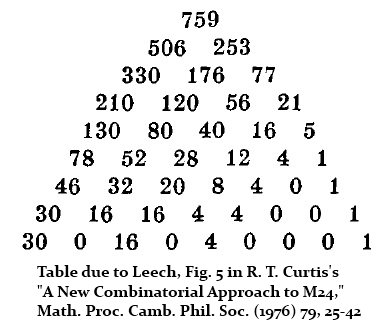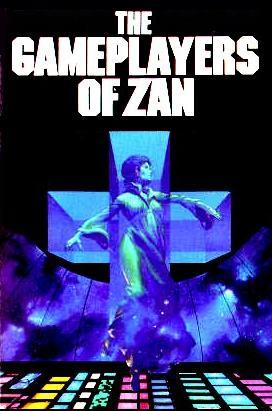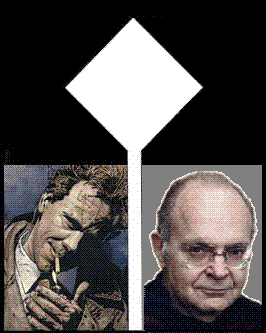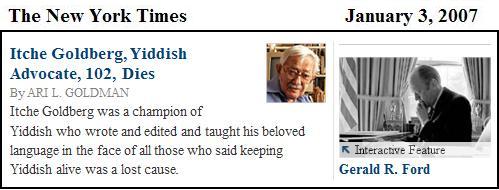
See also Grand Rapids in this journal.

See also Grand Rapids in this journal.
Instagram two days ago —
Compelled to Layer
"From the moment he penciled his first sketch
for the new Grand Rapids Art Museum (GRAM)
in Grand Rapids, Mich., architect Kulapat Yantrasast
was inspired by more than art. A native of Thailand
and a partner in the Los Angeles firm Workshop
Hakomori Yantrasast (wHY), Yantrasast, 39, felt
compelled to layer the building's primary role—
as a place for displaying art—with activities that
would naturally attract people. " [Link added.]
— https://www.architectmagazine.com/design/
buildings/gram-green_o , October 4, 2007
Six PM EDT is midnight CEST in Geneva.
For the late Marvin W. Meyer, professor at Chapman
University in Orange, California, and a graduate
of Calvin College in Grand Rapids, Michigan…
(Some background: Marilynne Robinson.)
"Design is how it works." — Steve Jobs
From a commercial test-prep firm in New York City—
From the date of the above uploading—
|
|
From a New Year's Day, 2012, weblog post in New Zealand—

From Arthur C. Clarke, an early version of his 2001 monolith—
"So they left a sentinel, one of millions they have scattered
throughout the Universe, watching over all worlds with the
promise of life. It was a beacon that down the ages has been
patiently signaling the fact that no one had discovered it.
Perhaps you understand now why that crystal pyramid was set…."
The numerical (not crystal) pyramid above is related to a sort of
mathematical block design known as a Steiner system.
For its relationship to the graphic block design shown above,
see the webpages Block Designs and The Diamond Theorem
as well as The Galois Tesseract and R. T. Curtis's classic paper
"A New Combinatorial Approach to M24," which contains the following
version of the above numerical pyramid—

For graphic block designs, I prefer the blocks (and the parents)
of Grand Rapids to those of New York City.
For the barbed tail of Clarke's "Angel" story, see the New Zealand post
of New Year's Day mentioned above.
“We have a need to tell ourselves stories
that explain it all. We use these stories to
supply the metaphysics,* without which
life seems pointless and empty.”
— David Brooks, NY Times of Nov. 10
“The story-teller of hell”
— Publisher’s promotional quotation
for The Nick Tosches Reader
* “the metaphysics“– This link leads to a web page at the Archdiocese of Dublin whose relevance to metaphysics is not obvious. Of course, from the point of view popular with viXra authors (see Thursday), everything is related to metaphysics. The link is to a homily that mentions Sr. Joan Chittester, O.S.B. A search on her works at Amazon.com leads to Welcome to the Wisdom of the World And Its Meaning for You: Universal Spiritual Insights Distilled from Five Religious Traditions. The title indicates that despite Chittester’s personal virtues, her book is, unlike the Tosches book above, less than first-rate. Still, a “meaning for you” is, in my case, not lacking. Continuing the search for a Joycean epiphany related to metaphysics, I found that the Chittester book‘s date of publication (by Eerdmans, the Grand Rapids Calvinist publisher) was July 24, 2007. For a metaphysical phrase on that date– “the Platonic ‘source of all images,'” see The Church of St. Frank. For metaphysics and the Church of some other saints, see the essay on the “metaphysics of goodness” linked to on the publication date of Chittester’s book.
"… Bush spoke and answered audience questions for nearly 90 minutes inside East Grand Rapids High School in suburban Grand Rapids….
After leaving the school, Bush's motorcade stopped at the Gerald R. Ford Presidential Museum in downtown Grand Rapids, where he stood silently for a few moments after placing a bouquet of white roses at Ford's burial site on the museum grounds. The 38th president, who grew up in Grand Rapids, died Dec. 26 at age 93."

For the meaning of multispeech,
see the entries of
All Hallows' Eve, 2005:

"There is such a thing
as a tesseract."
— A Wrinkle in Time
Gift of the Third Kind
Background:
Art Wars and
Russell Crowe as
Santa's Helper.
From Christmas 2005:
Related material from
Pittsburgh:
… and from Grand Rapids:
Related material
for Holy Saturday:
“What on earth is
a concrete universal?”
— Robert M. Pirsig
From A Shot at Redemption—

John Constantine,
cartoon character, and
Donald E. Knuth,
Lutheran mathematician
A photo opportunity —

and a recent cartoon:
From Calvin College,
today’s meditation:
“Horton Marlais Davies, Putnam professor emeritus of religion at Princeton and an author of many books about church history, died on Wednesday at his home in Princeton, N.J. He was 89…. Dr. Davies specialized in the impact of Christianity on the arts.”
The Catholic Encyclopedia (1908) on the communion of saints:
“One cannot read the parables of the kingdom (Matt., xiii) without perceiving its corporate nature and the continuity which links together the kingdom in our midst and the kingdom to come. The nature of that communion, called by St. John a fellowship with one another (‘a fellowship with
Related material:
Religious art in the entry Art History of 11 AM Wednesday, May 11, the date of Davies’s death. See also the following direct and indirect links from that entry:
To a cruciform artifact from the current film Kingdom of Heaven, to an entry quoting John xv, Nine is a Vine, and to Art Theory for Yom Kippur.
For less-religious material on the number nine, see the entries and links in the Log24 archive for June 17-30, 2004.

“If we open any tract–
Plastic Art and Pure Plastic Art
or The Non-Objective World,
for instance– we will find that
Mondrian and Malevich are not
discussing canvas or pigment or
graphite or any other form of
matter. They are talking about
Being or Mind or Spirit.”
Amen.

John Constantine,
cartoon character, and
Donald E. Knuth,
Lutheran mathematician
“…. recent books testify further to Calvin College’s unparalleled leadership in the field of Christian historiography. More than anyone else, the historians at Calvin (along with their Dutch Reformed publishers at Eerdmans) have led the way in first-rate thinking about the relationship between faith and history. One does not need to be a Calvinist, or a historian for that matter, to appreciate this thinking and its influence on a wide variety of intellectuals. I say this as a Lutheran who must confess in all honesty that his own American Lutheran tradition cannot hold a candle to the Calvinists in Grand Rapids….”
Relativity Blues
Today, February 20, is the 19th anniversary of my note The Relativity Problem in Finite Geometry. Here is some related material.
In 1931, the Christian writer Charles Williams grappled with the theology of time, space, free will, and the many-worlds interpretation of quantum mechanics (anticipating by many years the discussion of this topic by physicists beginning in the 1950's).
(Some pure mathematics — untainted by physics or theology — that is nevertheless related, if only by poetic analogy, to Williams's 1931 novel, Many Dimensions, is discussed in the above-mentioned note and in a generalization, Solomon's Cube.)
On the back cover of Williams's 1931 novel, the current publisher, William B. Eerdmans Publishing Company of Grand Rapids, Michigan, makes the following statement:
"Replete with rich religious imagery, Many Dimensions explores the relation between predestination and free will as it depicts different human responses to redemptive transcendence."
One possible response to such statements was recently provided in some detail by a Princeton philosophy professor. See On Bullshit, by Harry G. Frankfurt, Princeton University Press, 2005.
A more thoughtful response would take into account the following:
1. The arguments presented in favor of philosopher John Calvin, who discussed predestination, in The Death of Adam: Essays on Modern Thought, by Marilynne Robinson
2. The physics underlying Einstein's remarks on free will, God, and dice
3. The physics underlying Rebecca Goldstein's novel Properties of Light and Paul Preuss's novels Secret Passages and Broken Symmetries
4. The physics underlying the recent so-called "free will theorem" of John Conway and Simon Kochen of Princeton University
5. The recent novel Gilead, by Marilynne Robinson, which deals not with philosophy, but with lives influenced by philosophy — indirectly, by the philosophy of the aforementioned John Calvin.
From a review of Gilead by Jane Vandenburgh:
"In The Death of Adam, Robinson shows Jean Cauvin to be the foremost prophet of humanism whose Protestant teachings against the hierarchies of the Roman church set in motion the intellectual movements that promoted widespread literacy among the middle and lower classes, led to both the American and French revolutions, and not only freed African slaves in the United States but brought about suffrage for women. It's odd then that through our culture's reverse historicism, the term 'Calvinism' has come to mean 'moralistic repression.'"
For more on what the Calvinist publishing firm Eerdmans calls "redemptive transcendence," see various July 2003 Log24.net entries. If these entries include a fair amount of what Princeton philosophers call bullshit, let the Princeton philosophers meditate on the summary of Harvard philosophy quoted here on November 5 of last year, as well as the remarks of November 5, 2003, and those of November 5, 2002.
From Many Dimensions (Eerdmans paperback, 1963, page 53):
"Lord Arglay had a suspicion that the Stone would be purely logical. Yes, he thought, but what, in that sense, were the rules of its pure logic?"
A recent answer:
"We symbolize logical necessity
with the box ![]() )
)
and logical possibility
with the diamond ![]() ).
).
— Keith Allen Korcz,
(Log24.net, 1/25/05)
And what do we
symbolize by ![]() ?
?
"The possibilia that exist,
and out of which
the Universe arose,
are located in
a necessary being…."
— Michael Sudduth,
Notes on
God, Chance, and Necessity
by Keith Ward,
Regius Professor of Divinity
at Christ Church College, Oxford
(the home of Lewis Carroll)
Affirmation of Place and Time:
East Coker and Grand Rapids
This morning’s meditation:
“Let us talk together with the courage, humor, and ardor of Socrates.
In that long conversation, we may find ourselves considering something Plato’s follower Plotinus said long ago about ‘a principle which transcends being,’ in whose domain one can ‘assert identity without the affirmation of being.’ There, ‘everything has taken its stand forever, an identity well pleased, we might say, to be as it is…. Its entire content is simultaneously present in that identity: this is pure being in eternal actuality; nowhere is there any future, for every then is a now; nor is there any past, for nothing there has ever ceased to be.’ Individuality and existence in space and time may be masks that our sensibilities impose on the far different face of quantum reality.”
— Peter Pesic, Seeing Double: Shared Identities in Physics, Philosophy, and Literature, MIT Press paperback, 2003, p. 145
A search for more on Plotinus led to sites on the Trinity, which in turn led to the excellent archives at Calvin College in Grand Rapids.
A search for the theological underpinnings of Calvin College led to the Christian Reformed church:

“Our emblem is
the cross in a triangle.”
The triangle, as a symbol of “the delta factor,” also plays an important role in the semiotic theory of Walker Percy. A search for current material on Percy led back to one of my favorite websites, that of Percy expert Karey Perkins, and thus to the following paper:
The “East Coker” Dance
in T. S. Eliot’s Four Quartets:
An Affirmation of Place and Time
by Karey Perkins
For a rather different, but excellent, literary affirmation of place and time — in Grand Rapids, rather than East Coker — see, for instance, Michigan Roll, a novel by Tom Kakonis.
We may, for the purposes of this trinitarian meditation, regard Percy and Kakonis as speaking for the Son and Karey Perkins as a spokesperson for the Holy Spirit. As often in my meditations, I choose to regard the poet Wallace Stevens as speaking perceptively about (if not for, or as) the Father. A search for related material leads to a 1948 comment by Thomas McGreevy, who
“… wrote of Stevens’ ‘Credences of Summer’ (Collected Poems 376),
On every page I find things that content me, as ‘The trumpet of the morning blows in the clouds and through / The sky.’
A devout Roman Catholic, he added, ‘And I think my delight in it is of the Holy Spirit.’ (26 May 1948).”
An ensuing search for material on “Credences of Summer” led back, surprisingly, to an essay — not very scholarly, but interesting — on Stevens, Plotinus, and neoplatonism.
Thus the circle closed.
As previous entries have indicated, I have little respect for Christianity as a religion, since Christians are, in my experience, for the most part, damned liars. The Trinity as philosophical poetry, is, however, another matter. I respect Pesic’s speculations on identity, but wish he had a firmer grasp of his subject’s roots in trinitarian thought. For Stevens, Percy, and Perkins, I have more than respect.
ART WARS:
Readings for Bach's Birthday
Larry J. Solomon:
Symmetry as a Compositional Determinant,
Chapter VIII: New Transformations
In Solomon's work, a sequence of notes is represented as a set of positions within a Latin square:

Transformations of the Latin square correspond to transformations of the musical notes. For related material, see The Glass Bead Game, by Hermann Hesse, and Charles Cameron's sites on the Game.
Steven H. Cullinane:
Dorothy Sayers:
"The function of imaginative speech is not to prove, but to create–to discover new similarities, and to arrange them to form new entities, to build new self-consistent worlds out of the universe of undifferentiated mind-stuff." (Christian Letters to a Post-Christian World, Grand Rapids: Eerdmans, 1969, p. xiii)
— Quoted by Timothy A. Smith, "Intentionality and Meaningfulness in Bach's Cyclical Works"
Edward Sapir:
"…linguistics has also that profoundly serene and satisfying quality which inheres in mathematics and in music and which may be described as the creation out of simple elements of a self-contained universe of forms. Linguistics has neither the sweep nor the instrumental power of mathematics, nor has it the universal aesthetic appeal of music. But under its crabbed, technical, appearance there lies hidden the same classical spirit, the same freedom in restraint, which animates mathematics and music at their purest."
— "The Grammarian and his Language,"
American Mercury 1:149-155, 1924
Powered by WordPress